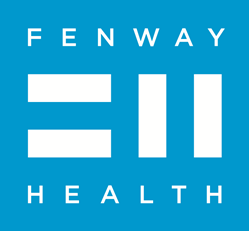
Thanks to the vaccine, HPV is almost completely preventable. Youth who receive the vaccine before they become sexually active can be spared from the development of some deadly cancers later in life.
BOSTON (PRWEB)
October 02, 2022
A policy brief published by The Fenway Institute at Fenway Health offers recommendations to health professionals and policy makers on how to improve Human Papillomavirus (HPV) vaccination rates in the U.S. HPV is the most common sexually transmitted infection (STI) in the world. Approximately 79 million Americans, most in their teens and early 20s, are infected with HPV despite the widespread availability of a safe and effective vaccine since 2006.
“Thanks to the vaccine, HPV is almost completely preventable. Youth who receive the vaccine before they become sexually active can be spared from the development of some deadly cancers later in life,” said Ellen Harsha, medical student at Loyola University Chicago, Stritch School of Medicine and a former Fenway Institute Research Fellow who authored the policy brief. “It’s imperative that public health officials, law and policy makers, and health care providers have and use every tool available to boost vaccinations among young people and adults up to age 45.”
HPV causes genital warts and has been implicated in high-risk cancers including cervical, anal, and oropharyngeal cancers—also known as head and neck squamous cell carcinomas. The HPV vaccine, which can prevent more than 90 percent of HPV-attributable cancers, has been widely recommended for girls and young women since 2007, and for boys and young men since 2011. But vaccination rates remain far below optimal rates of coverage, especially among male-identifying individuals. Notably, HPV-related anal cancer is 80 times more prevalent among HIV-positive men who have sex with men than among the general U.S. population, and they therefore should be vaccinated, but data indicate that men who have sex with men are also less likely to be vaccinated.
There are other disparities in vaccination rates across populations of varying sexual and gender identities, as well as race and ethnicity. Data indicate that lesbians may be less likely than heterosexual and bisexual women to have been vaccinated. Black and Hispanic people are less likely than White non-Hispanic people to have been vaccinated. There is limited data, though, on gender identity and HPV vaccination. The policy brief summarizes research on HPV vaccination among LGBT people, as well as research indicating high rates of anal cancer related to HPV infection among gay and bisexual men living with HIV.
The US Centers for Disease Control’s Advisory Committee on Immunization Practices (ACIP) recommends the routine vaccination of all adolescents age 11 and 12. The ACIP also recommends catch-up vaccinations for all adolescents and adults ages 13 to 26, and for high-risk individuals aged 27-45.
The policy brief, titled “Improving Human Papillomavirus vaccination rates in the U.S.: Recommendations for health professionals and policy makers,” addresses barriers to HPV vaccination, including the politicization of vaccines, sex and gender-based stigma, medical mistrust, misinformation, and insufficient provider recommendation.
“Fortunately, we know from previous examples what steps we can take to successfully promote utilization of the HPV vaccine,” said Harsha. “Rhode Island, for example, has required the vaccination of all seventh graders since 2015 and now has the nation’s highest HPV vaccination rate at 83 percent. Other states require or recommend distribution of HPV vaccination information to parents. Still others require their departments of health to collect HPV vaccination data or conduct public awareness activities. Boosting our vaccination rates should not be a heavy lift. What we need is the political will, resources, and prioritization to implement effective awareness and education campaigns and to make the vaccine more easily accessible.”
The policy brief offers eight recommendations to increase HPV vaccination:
-
Public health officials and political leaders should take additional steps to promote broad utilization of the HPV vaccine. Such steps would include educational outreach directed at adolescents and their parents—with a particular focus on male-identified youth—to address misinformation about vaccine efficacy and safety. - Reprioritize vaccination promotion efforts that were disrupted due to the COVID-19 pandemic.
- State health departments should support and endorse HPV vaccination programs and look to Rhode Island’s success for ideas.
- Provide training and resources to primary care providers so they are well-equipped to provide competent, culturally relevant and comprehensive recommendations, and clearly communicate the risks of HPV to their patients.
- Barriers to vaccination should be addressed through context-specific interventions such as making no-cost HPV vaccines available in school-based clinics, Federally Qualified Health Centers, and STI clinics.
- Address issues of medical mistrust among racial and ethnic minority populations and LGBTQIA+ people.
- Continue research into vaccination benefits for high risk adult populations such as gay and bisexual men and people living with HIV.
- Expand research into the therapeutic uses of the HPV vaccine which has been shown in some clinical trials to protect against genital warts and precancerous cervical lesions among HPV-positive women.
“Improving Human Papillomavirus vaccination rates in the U.S.: Recommendations for health professionals and policy makers,” is available for download as a PDF here.
Share article on social media or email:

